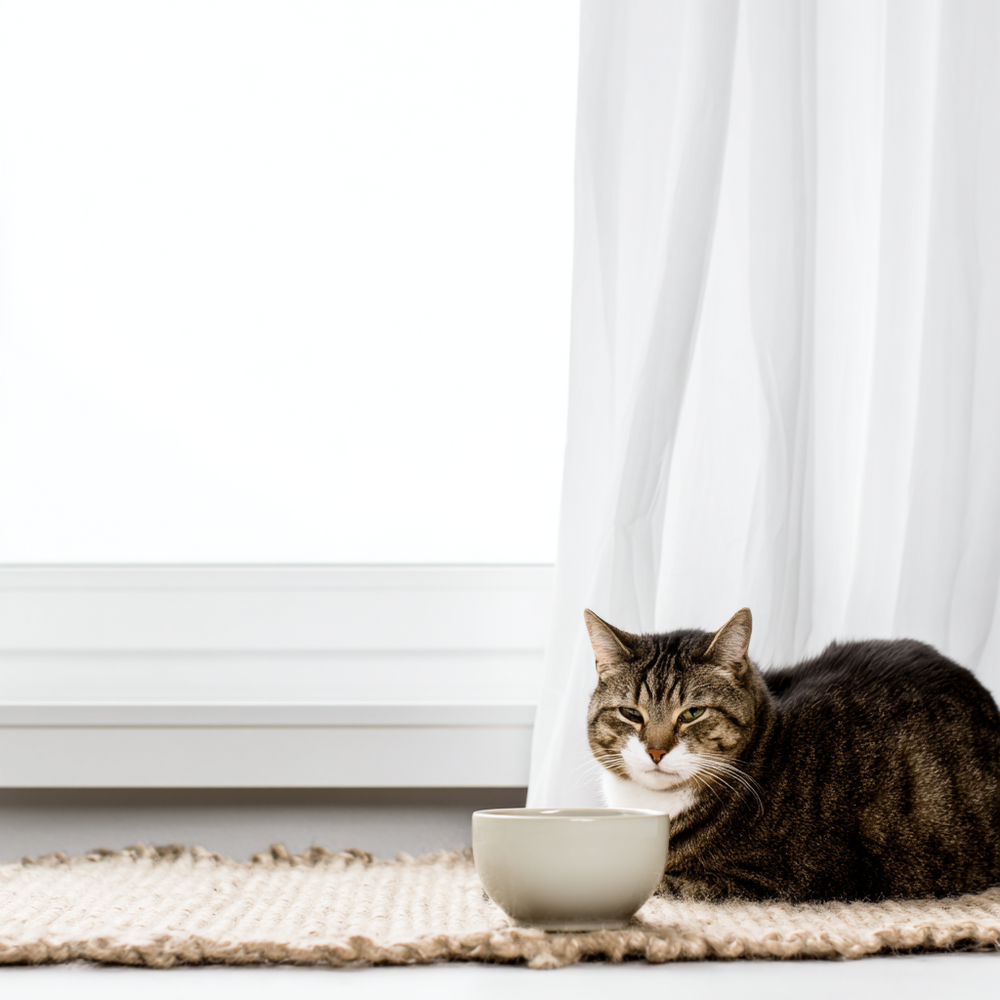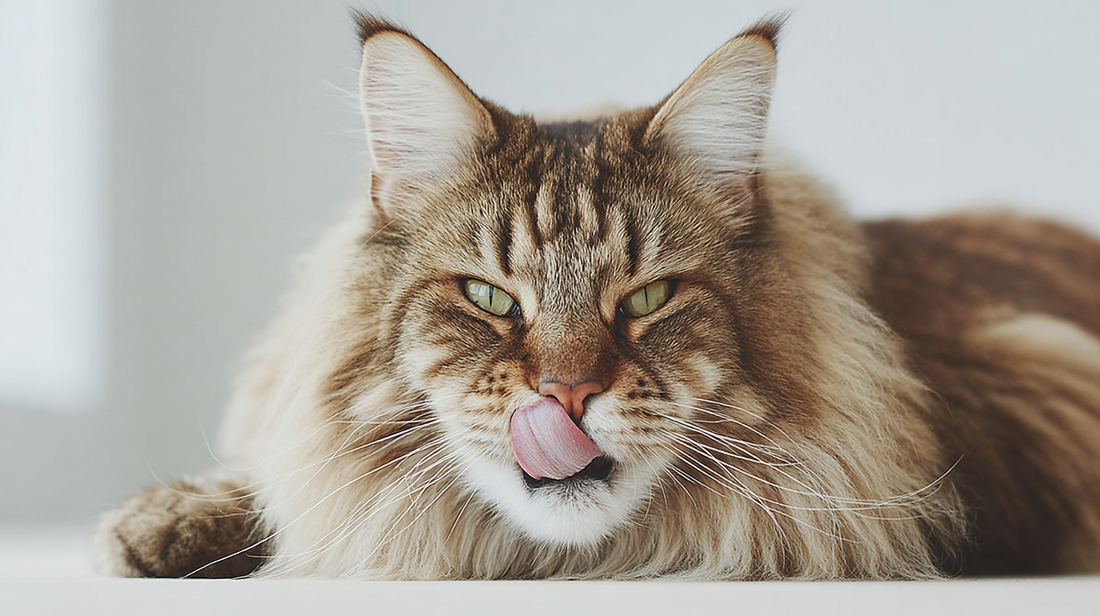When your beloved feline companion suddenly delivers a sharp bite, it can be both startling and deeply confusing. You might find yourself wondering, " Why does my cat bite me?" This behavior isn't just frustrating—it's actually your cat's way of communicating that something isn't quite right in their world. As an experienced veterinarian, I want to help you decode your cat's language and strengthen the bond you share. The question "why does my cat bite me" is one of the most common concerns I address in my practice. Let's explore the reasons behind cat biting and discover how you can respond with empathy, transforming moments of confusion into opportunities for deeper connection.
Summary
Understanding cat biting as communication
Your cat doesn't bite out of malice or spite—they're genuinely trying to communicate something important to you. When your cat bites, it's their direct way of expressing emotions like fear, frustration, or overstimulation. By learning to understand their body language, you can interpret these vital signals and prevent bites before they occur.
Think of it this way: cats use behaviors like biting to convey their needs when their more subtle signals haven't gotten through to you. As their caregiver, it's your responsibility to learn these messages rather than simply dismissing the behavior as "naughty." Understanding the answer to "why does my cat bite me" requires recognizing that biting is fundamentally a form of feline communication.
Why does my cat bite me: The most common reasons
Play aggression: when play gets too rough
Play aggression represents the most frequent reason I see cats biting, particularly among kittens and young adults. Your cat is a natural predator, and play serves as their primary method for practicing essential hunting skills. You'll notice they stalk, pounce, and bite as part of these deeply ingrained instinctual behaviors. If you're asking "why does my cat bite me during playtime," this natural predatory behavior is typically the answer.
When their play involves biting your hands and feet, it typically means they haven't yet learned what constitutes appropriate play boundaries with humans. Your hands can appear like exciting "prey" to your cat, especially if you've encouraged rough play or haven't provided adequate alternative toys.
When your cat discovers that biting produces exciting reactions from you, this behavior becomes inadvertently reinforced and more likely to repeat. Remember, cats are crepuscular creatures, meaning they're naturally most active during dawn and dusk hours, which often translates into concentrated bursts of playful energy during these specific times.

Petting-induced aggression: "that's enough!"
This type of biting can be particularly puzzling because it occurs precisely when you're showing your cat affection through petting. Your cat has an individual "petting tolerance"—a specific limit to how much physical interaction they can comfortably handle at any given time. Once they reach that personal threshold, they may bite to clearly signal "that's enough."
Before resorting to biting, your cat will typically give you warning signals through their body language: tail lashing or twitching with increasing intensity flattened ears positioned against their head ("airplane ears") tensed body posture or visible ripples moving through their fur dilated pupils that appear larger than normal skin twitching along their back, particularly near the base of their tail direct, unblinking stare that feels unusually intense
Learning to identify these crucial warning signs is absolutely essential for preventing bites. The moment you observe these signals, immediately stop petting and give your cat the space they're requesting.
I recommend using what I call "consent testing": offer your hand to your cat, pet them briefly in an area they typically enjoy, then withdraw your hand completely. If they actively solicit more petting by rubbing against your hand or head-butting you, continue for just a few more strokes before withdrawing again. This technique allows your cat to control the interaction entirely, building mutual trust while preventing overstimulation.
Fear and stress-related biting: when flight isn't an option
Your cat is naturally wired with a "fight or flight" response system. When they perceive a genuine threat and cannot escape or find adequate hiding places, they may resort to biting as their primary self-defense mechanism. You'll commonly see this during stressful veterinary visits, when your cat encounters unfamiliar people or animals, or when they're suddenly startled by loud noises.
Veterinary clinics, in particular, can feel overwhelming to your cat, filled with unfamiliar sights, sounds, and concerning smells from other animals. Using punishment to address fear-based behaviors will only intensify your cat's fear and significantly damage the trust in your relationship. Instead, focus your efforts on creating a consistently safe, predictable environment where your cat feels genuinely secure.
Pain or medical condition biting: a hidden symptom
Your cat is remarkably skilled at hiding pain or illness—this represents a crucial survival instinct inherited from their wild ancestors. When you notice sudden behavioral changes, including new biting behaviors, this could indicate underlying medical problems or chronic pain conditions. Your cat might bite when you touch them in areas that cause discomfort, or they may become generally irritable due to persistent pain you cannot see. If you're suddenly wondering "why does my cat bite me when they never did before," pain or illness should be your first consideration.
Medical conditions such as dental disease, arthritis, urinary tract issues, or other internal ailments can all manifest through changes in your cat's behavior. If your cat's biting behavior is new, has recently changed in intensity or frequency, or appears alongside other symptoms like appetite changes, litter box habit changes, or energy level changes, a thorough veterinary examination becomes absolutely crucial for proper diagnosis.

Redirected aggression: the wrong target
This phenomenon occurs when your cat becomes highly agitated by something they cannot physically reach, and they "redirect" their built-up aggression onto the nearest available target—which unfortunately is often you. For example, if your cat spots another cat outside your window or hears a sudden, startling noise, they might become intensely frustrated because they cannot directly address or confront the source of their arousal.
To prevent these incidents, work to identify your cat's potential triggers and ensure they have appropriate outlets for their energy or easily accessible safe spaces where they can retreat when feeling agitated.
Attention-seeking biting: learning what gets a reaction
Practical solutions for managing cat biting behavior
Read your cat's body language
This skill represents your most critical tool for preventing bites before they occur. Pay close attention to your cat's ears, tail position, whiskers, overall posture, and facial expressions throughout your interactions. The moment you notice signs of discomfort or increasing agitation, immediately stop the interaction and give your cat the space they're requesting.

Provide appropriate play outlets
Respect your cat's boundaries
Create a safe environment
Your cat thrives on predictability and routine in their environment. Provide abundant resources throughout your home, including multiple food and water bowls, adequate litter boxes (I recommend one per cat plus one extra), various scratching areas, and comfortable resting spots distributed across multiple locations to reduce territorial stress and competition.

Avoid punishment
Seek veterinary guidance
When professional help is necessary
You should always contact your veterinarian immediately if you notice any of these concerning signs:
the biting behavior is completely new or appeared suddenly the biting is severe enough to cause injury to you or family members the behavior continues worsening despite your consistent efforts to address it you suspect your cat may be experiencing pain or you feel overwhelmed by the situation
Your veterinarian can provide a comprehensive evaluation of your cat's condition, discuss medication options if they become necessary, and refer you to a board-certified veterinary behaviorist who specializes in treating complex behavioral problems.
Building a stronger bond through understanding
Understanding why does my cat bite me represents the crucial first step toward creating a happier, safer home environment for both of you. Your cat communicates through their actions, and learning to recognize the underlying emotions—whether it's the excitement of play, the limits of their patience, the burden of fear or pain, or simply a plea for your attention—allows you to respond more effectively to their needs. The next time you find yourself asking "why does my cat bite me," remember that this behavior is your cat's way of communicating something important about their emotional or physical state.
By prioritizing positive reinforcement techniques, providing a mentally stimulating environment, and always considering both their physical and emotional well-being, you can transform these challenging moments into valuable opportunities for deeper connection and mutual trust.
The information in this article is based on the following scientific publications:
- Elliott, J., & Grauer, G. (Eds.). (2006-2007). BSAVA Manual of Canine and Feline Nephrology and Urology (2nd ed.). BSAVA Publications.
- Villiers, E., & Blackwood, L. (Eds.). (2005). BSAVA Manual of Canine and Feline Clinical Pathology (2nd ed.). BSAVA Publications, Gloucester
- Horwitz, D. F., & Mills, D. S. (Eds.). (2009). BSAVA Manual of Canine and Feline Behavioural Medicine (2nd ed.). BSAVA Publications, Gloucester
- Harvey, A., & Tasker, S. (Eds.). BSAVA Manual of Feline Practice: A Foundation Manual. BSAVA Publications
- Rendle, M., & Hinde-Megarity, J. (Eds.). (2022). BSAVA Manual of Practical Veterinary Welfare (1st ed.). BSAVA Publications.
Looking for a solution? Start here
Stylla Calmness for cats
Supports relaxation and emotional balance with amino acid-based formulation
- Promotes emotional balance and relaxation
- Helps maintain balanced behaviour
- Supports healthy physiological equilibrium
Made in Switzerland with strict quality standards





